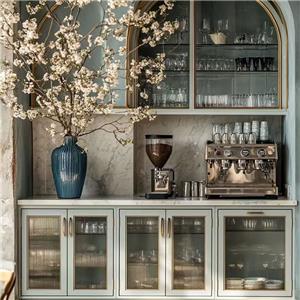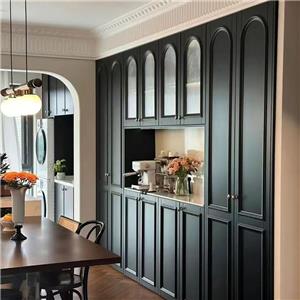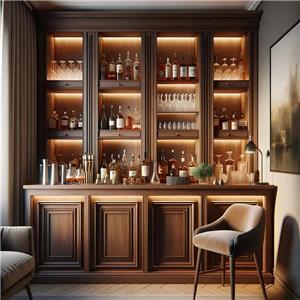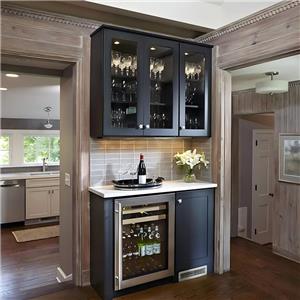How deep should a built-in wardrobe closet be?
In the design of a wardrobe, depth is a very critical parameter that determines the practicality and functionality of the wardrobe. Although there are many wardrobe designs and styles on the market, the depth of a wardrobe has always been a confusing topic for consumers: How deep should a built-in wardrobe closet be to meet daily use needs? Too much or too little depth will affect the storage capacity and space utilization of the wardrobe, and even affect the beauty and convenience of use of the wardrobe.
This article will comprehensively explore the depth of built-in wardrobe closets, combine different needs, spaces and design concepts, help consumers better understand the selection criteria for the depth of built-in wardrobe closets, and put forward practical design suggestions.
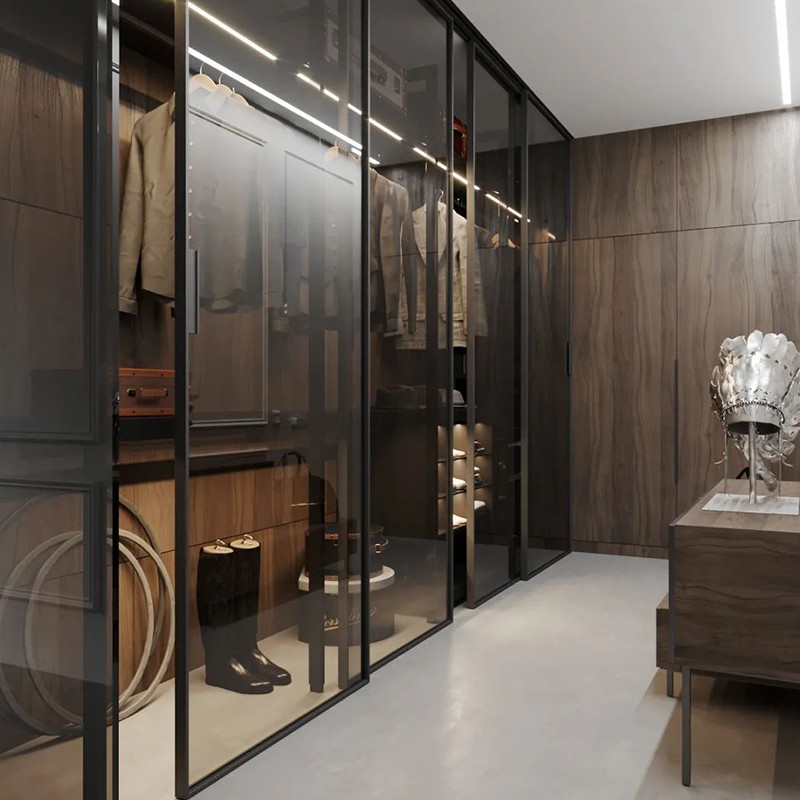
What is the standard depth of a built-in wardrobe closet?
The depth of a built-in wardrobe closet is usually determined at the beginning of the design, and it is directly related to the storage function and space layout of the wardrobe. Generally speaking, the depth of a built-in wardrobe closet is designed according to the standard clothing storage needs, especially the part used to hang clothes.
1. Standard depth
The standard depth of most built-in wardrobe closets is 60 cm. This depth is considered to be the most suitable size for most families and can meet most clothing storage needs. The specific reasons are as follows:
· Hanging space: According to the standard hanging size of clothing, a depth of 60 cm can ensure that the hanging length of clothing is not restricted, especially for coats, jackets, shirts and other clothing. Generally, the hanging of adult coats requires a depth of at least 55 cm, while a depth of 60 cm can accommodate clothing of different lengths, and it is not easy for clothing to be stacked or squeezed.
· Hanger use: The depth of 60 cm is enough to accommodate standard hangers, ensuring that clothes are not easily deformed when hanging, and it is also convenient for daily access. Too shallow a depth may cause the clothes to not be fully unfolded, affecting the wearing effect, while too deep a design may waste space and even make it difficult to take clothes.
· Beautiful design: The depth of 60 cm is coordinated with most home spaces and styles. It does not appear too abrupt, nor does it take up too much room area, maintaining the transparency and beauty of the space.
2. Greater depth
For some families or design styles with specific needs, some built in wardrobe closets may choose a depth of 70 cm to 90 cm. This depth is usually suitable for families with higher storage needs or more clothing storage.
· More storage space: A deeper wardrobe provides users with more storage space and is suitable for storing more clothing, especially for multi-season, frequently changed clothing or large items (such as down jackets, long coats, etc.). A deeper depth can provide better storage space.
· Multifunctional design: Some built-in wardrobe closets with larger depths are often integrated with other functional areas, such as designed as integrated spaces such as cloakrooms and dressing tables, using deeper space to store a variety of items such as clothing, shoes, hats, bags, etc.
· Suitable for designs with more internal partitions in the wardrobe: For users who need to store different clothing in different partitions (such as tops, pants, skirts, shoes, etc.), a deeper wardrobe can be divided into more functional areas, such as designing accessories such as layered shelves and pull-out baskets.
However, built-in wardrobe closets with too large depths also have certain challenges: in a limited space, a too deep design may make the wardrobe appear crowded, especially in a small bedroom, which can easily lead to unreasonable use of space and affect traffic.
3. Smaller depth
For some small space designs, the depth of built in wardrobe closet is sometimes less than 60 cm, usually 45 cm to 55 cm, and this design of wardrobe is common in rooms with very limited space.
·Adapt to small space: For some small bedrooms or apartments, reducing the depth of the wardrobe can save space to the maximum extent when space is limited. Shallow wardrobes are suitable for placing light clothes and avoid occupying too much precious space in the room.
·Suitable for simple design: In modern minimalist style home design, shallow depth wardrobes can better integrate into the space and maintain simplicity and freshness. Especially when pursuing minimalist style in design, shallow built in wardrobe closet can provide more openness.
·Functional limitations: However, the depth of the wardrobe is too shallow, which limits its storage function and cannot hang long clothes. Other alternatives such as clothes hanging bags may be needed.
For families with low demand for clothing storage or really compact space, the shallow depth design can be a sensible choice, but too shallow wardrobes will be subject to some limitations in actual use.
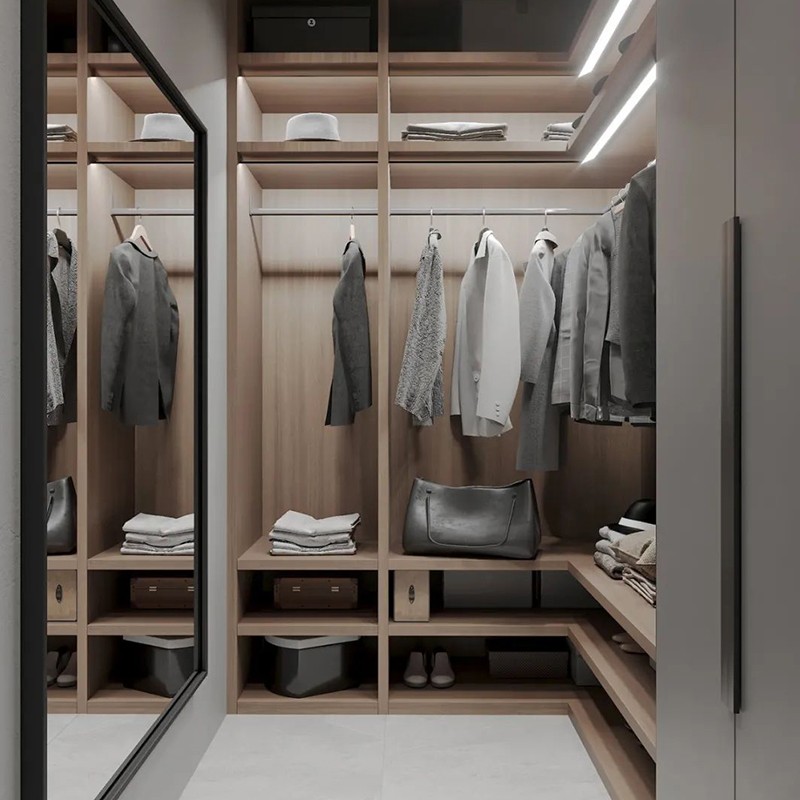
Depth of built in wardrobe closet: How to choose?
The depth of a built-in wardrobe closet is not the bigger the better. Reasonable design should be combined with multiple factors such as the actual situation of the space, the storage needs of the family, and the usage habits of the residents to achieve the greatest use value.
1. Space size
When choosing the depth of a wardrobe, you first need to consider the actual size of the room. If the bedroom space is spacious, you can choose a deeper wardrobe to increase the storage function, especially if there is a separate cloakroom, you can design a deeper wardrobe with more storage functions. If the space is small, you should consider choosing a shallower wardrobe to avoid affecting the overall layout and access.
2. Clothing storage needs
The clothing storage needs of different families vary greatly. If there are many family members and a wide variety of clothes, then a deeper wardrobe will be more suitable; conversely, if there are fewer family members and not many clothes, a shallow wardrobe can also meet basic needs.
3. Functionality and design
The functionality and design of a built-in wardrobe closet are also important factors affecting the depth selection. For example, if there are multiple partitions, drawers, pull-out baskets and other additional functions in the wardrobe, you may need to consider the depth adaptation to ensure that the items are easy to access. In addition, some stylish and modern wardrobes use shallow depth to maintain a simple appearance. In this case, the depth should be coordinated with the overall design style.
4. Comfort and usage habits
The comfort of the wardrobe is also a key point to consider when considering the depth. If the wardrobe is too deep, it is easy to cause inconvenience when taking clothes, especially for people with shorter stature. The depth of the internal space of the wardrobe should match the user's height and daily clothing habits.
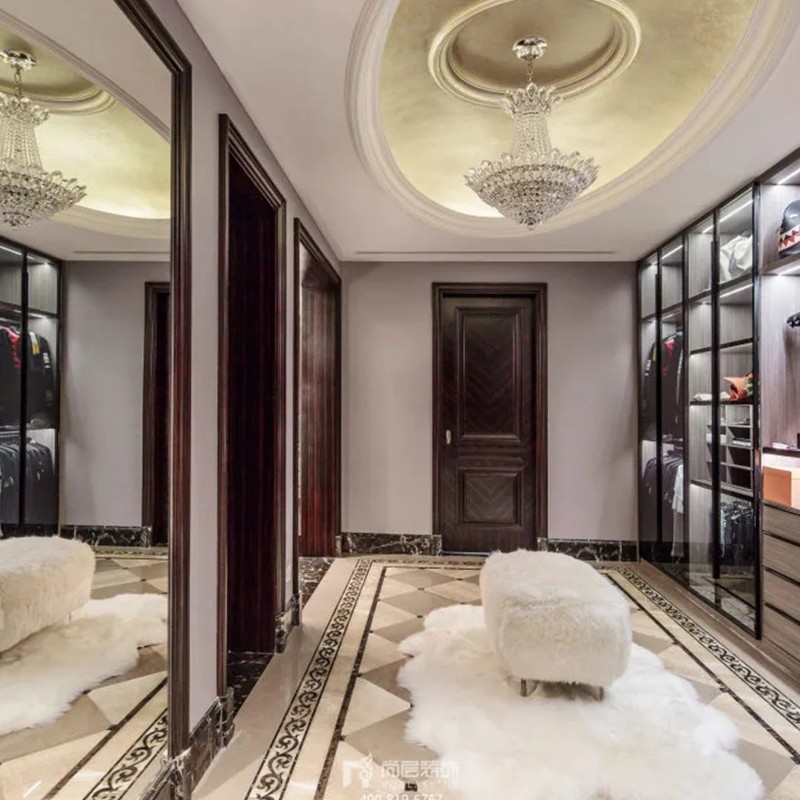
How to improve the practicality of built-in wardrobe closet?
In order to improve the practicality and aesthetics of built-in wardrobe closet, in addition to choosing the depth reasonably, some optimization measures can be added in the design:
1. Add adjustable shelves and hanging rods
By using adjustable shelves and hanging rods, the internal space of the wardrobe can be flexibly adjusted to meet the storage needs of different seasons and different types of clothing. Adjustable hanging rods and shelves can provide more storage space within different depth ranges.
2. Use storage accessories properly
Some accessories built in wardrobe closet, such as pull-out baskets, storage boxes, hanging bags, etc., can effectively improve the storage capacity and space utilization of wardrobes. Proper planning of the use of these accessories can enable even shallower wardrobes to store more items and improve the overall storage function.
3. Consider ventilation and lighting design
Regardless of the depth of the wardrobe, reasonable ventilation and lighting design are essential. Properly designed vents and lights can not only prevent clothes from getting moldy, but also make it easier for users to find the items they need in a dim environment.
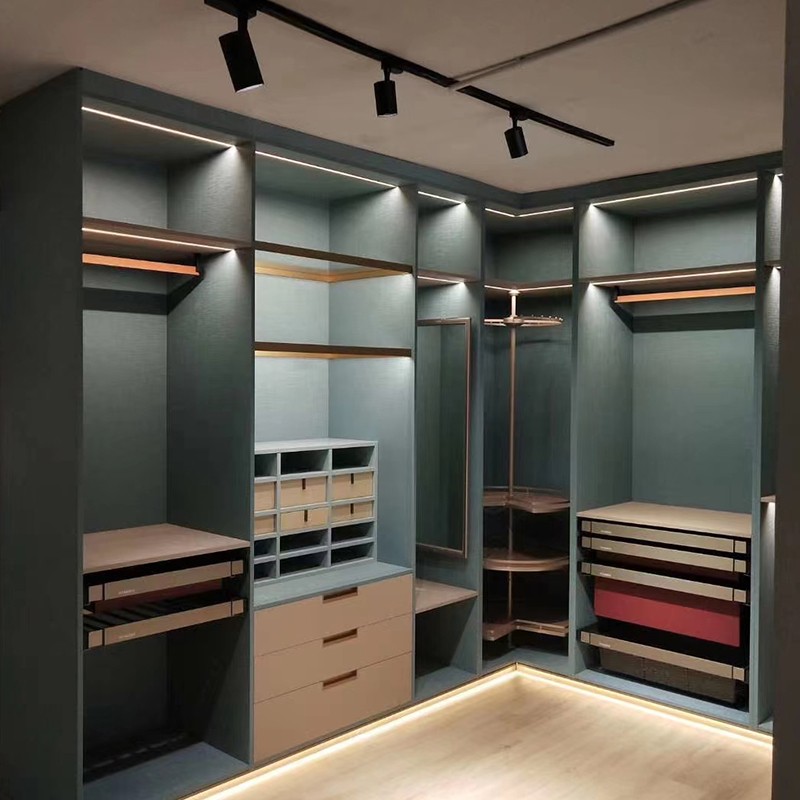
How quickly can Gagaluna deliver bulk orders?
Lead times depend on order size and customization levels, but our factory is optimized for speed and efficiency. Gagaluna typically completes orders faster than many competitors due to in-house manufacturing and experienced staff. We work closely with buyers to meet their project timelines and provide shipping solutions for international deliveries.

